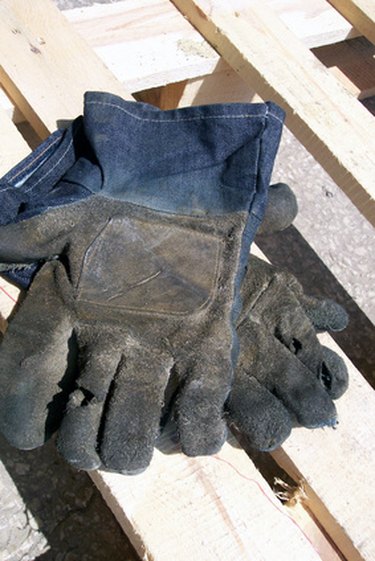
Melting PVC plastic can be a very simple project depending on your reason for melting it. If you simply need to melt the PVC enough that it is pliable, a heat gun will get the job done. If you need to melt the PVC to the extent that you can mold and shape it, you will need a double boiler. It is important to remember that PVC plastic burns easily -- which is why you can't use a heat gun if you need to make it extremely malleable -- and it is virtually impossible to convert PVC plastic to a liquid form without destroying its chemical composition.
Bending and Shaping PVC
Video of the Day
Step 1

Put on your safety glasses, gloves and respirator. PVC plastic emits toxic fumes when heated. Protect yourself.
Video of the Day
Step 2
Turn the heat gun on and pass it over the PVC. Do not hold the heat gun in the same place for more than a second or two or you will burn the PVC. Continue to pass the heat gun over the PVC for about 20 seconds, then check to see if it is pliable enough to bend.
Step 3
Twist and bend the PVC into the shape you need. If it becomes too rigid to bend, reheat it with the heat guy, being careful not to burn it.
Molding and Shaping Melted PVC
Step 1
Pour water in the bottom of the double boiler. Heat the boiler and allow the water to begin boiling and letting off steam.
Step 2
Cut the PVC plastic into pieces small enough to fit in the top pot of the double boiler.
Step 3
Place the pieces of PVC in the top pot of the double boiler and allow them to heat. The melting temperature of PVC plastic is between 80 and 85 degrees Celsius, so this process may take a while.
Step 4

Mold and form the melted PVC into the shape you need using the high-temperature, heat-resistant gloves.